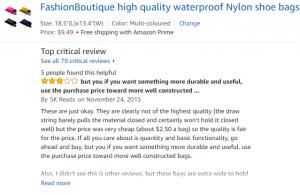
Undoubtedly the COVID-19 pandemic has changed much in the way B2C businesses interact with their customers both offline and online. And yet, one thing hasn’t changed – that is, the importance of hearing their honest feedback about the services/products and improving them in a timely manner, accordingly.
More importantly, the growing people’s anxiety, mixed with the rapidly changing lockdown measures, which consequently affect their immediate and long-term preferences, have made such feedback even more essential in 2020-2021, than it could ever be.
The good news is, now that the global vaccination campaign is already in progress, things are getting somewhat back to “normal”. But is this “normal” the old notion, or the new one? And how to make sure a brand’s product or service is still a good fit for their target market’s needs?
No matter what niche a brand’s working in, the marketers’ toolkit on how to capture customer feedback is more or less the same. Namely, in addition to their comments and recommendations, provided voluntarily via the company’s tech support emails, online chats or social media, it also includes a bunch of online/offline survey tech solutions, aimed at acquiring feedback from the less vocal customers.
And while the former option usually works well as a reactive tool, which can help brands prevent a potential PR crisis or at least mitigate its negative consequences, building a one-on-one dialogue with a person in search of their honest feedback is definitely a proactive tactic.
Filling in the Form vs. Answering a Call
If you ask me, both options could possibly backfire or be a mere waste of time and money, if done carelessly. However, the careful strategic prep can turn things around, enabling companies to both establish a meaningful conversation with their target audience, and significantly improve their brand loyalty.
In particular, here’re some of the crucial aspects to keep in mind:
- Content
- Tech
- Privacy
- Incentives
In this respect, for many marketers online surveys often become a primary choice, due to several reasons:
- the content part is somewhat easier to handle (simply because there’s no human interaction involved, hence less risks of miscommunication);
- a wide selection of quality online survey tech on the market, from the well-known SurveyMonkey to a vast array of niche-specific solutions;
- minimal privacy risks, if no personal information is requested;
- comprehensive reward strategies (e.g. providing a discount coupon code, a bonus offer, a premium subscription or else).
At the same time, what’s missing in online surveys is the actual meaningful dialogue between a brand and a customer, which can nurture their loyalty and even fuel organic brand ambassadorship in the long run.
Keys to Building Meaningful Conversations via Phone Surveys
First, let’s make things clear: launching a waterfall of robocalls is NOT a marketing strategy. Neither is hiring an unverified third-party tech provider to handle phone surveys for your company.
Instead, a potentially effective strategy involves the following aspects:
- Dialogue structuring
- Personalized incentives prep
- Personnel training
- Call recording tech selection & setup
- Data privacy disclosures
- Ongoing adjustments & improvements
Namely, the content prep is more on the creative side of things, and so is the personnel training, both of which require a joint effort of copywriters, marketers, biz-dev execs and even the HR team to be a success. Meanwhile, the tech setup is seemingly a more routine, hence an easier task to handle, right?
Well, it’s not as simple as it may seem. The trick is, the multitude of call recording tech on the market is virtually stunning, and it’s vital to select the right option/s to fit your company’s needs.
On one hand, you can opt for hiring a professional call center service (e.g. Twilio or else), which would handle the setup of a separate phone line, along with the recording aspect (working with third-party callers is another part of a conversation, of course, a much trickier one, I should say).
This, certainly, is an easier way to handle things, but implies certain data security risks, primarily related to your customers’ Personal Data disclosure to third parties.
On the other hand, you can go for deployment of the in-house call recording capabilities, using a third-party call recording tech (e.g. Cube ACR B2B, or else), which enables keeping both the customer data & call data stored in-house, yet puts more pressure on the company’s dev and QA team in terms of the tech setup.
Whatever the option chosen, however, the key aspect you can’t miss out on is, of course, how well the obtained customer feedback is put into action, i.e. how willing you are to actually improve your product/service based on your consumers’ real-life needs. Otherwise, why all the fuss, right?
Business & Finance Articles on Business 2 Community
(77)
Report Post





